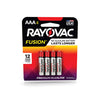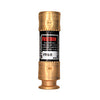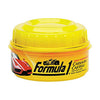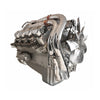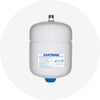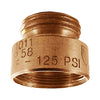Long white daikon radish, Raphanus sativus, sun-dried and pickled with rice bran and sea salt in wooden kegs. Diastase, an enzyme from fermentation, stimulates appetite and aids digestion. Traditionally served with meals sliced into small pieces. Kosher EDEN Pickled Daikon Radish is made using traditional methods dating back centuries. The long white radishes are first washed and hung outside to dry for over two weeks. Drying concentrates the sweetness of the radish. The roots are then separated from the dried leaves. They are placed in huge wooden barrels with layers of rice bran and sea salt where they are left to pickle. When ready the pickled radishes are removed, sliced and packaged with a small amount of the rice bran still covering the pickles. One of the most popular ways of making pickles in Japan is to place vegetables in a mixture of rice bran and sea salt. Rice bran or 'nuka' is the outer coating of brown rice that is removed during the process of making white rice. The bran layer is where most of the phytonutrients and oils are located. These pickles are called 'nuka-zuke', or rice bran pickles. The history of the daikon pickle dates back to seventeenth century Japan where legend credits the Buddhist priest, Takuan, as being the first to pickle whole daikon in rice bran and sea salt. His name, Takuan, was given to this pickle in honor of his prized invention. Traditionally processed EDEN Pickled Daikon has a yellow to tan color, with a crisp texture and tart flavor. No sugars, synthetic dyes or chemicals are used in their production. Commercially hurriedly pickled daikon is a bright chemical yellow dye color. Pickled vegetables are highly regarded as nutritious digestive aids. Diastase, an enzyme produced during fermentation, is believed to stimulate healthy appetite and digestion, especially of carbohydrate foods such as grains. It is low calorie with zero fat. The digestive enzymes diastase, amylase, and esterase benefit digestion whether in raw, dried or pickled daikon. To use EDEN Pickled Daikon slice to remove the desired amount and place the remainder back in the package and seal. Rinse the removed portion under cold water to remove bran and sodium. Thinly slice and eat a couple of pieces with your meal. Pickled daikon can also be minced and tossed into grain salads, or sliced and used as a filling for sushi and rice balls.
Long white daikon radish, Raphanus sativus, sun-dried and pickled with rice bran and sea salt in wooden kegs. Diastase, an...
See more































